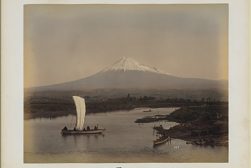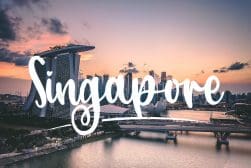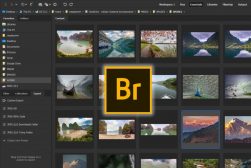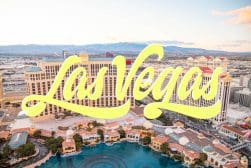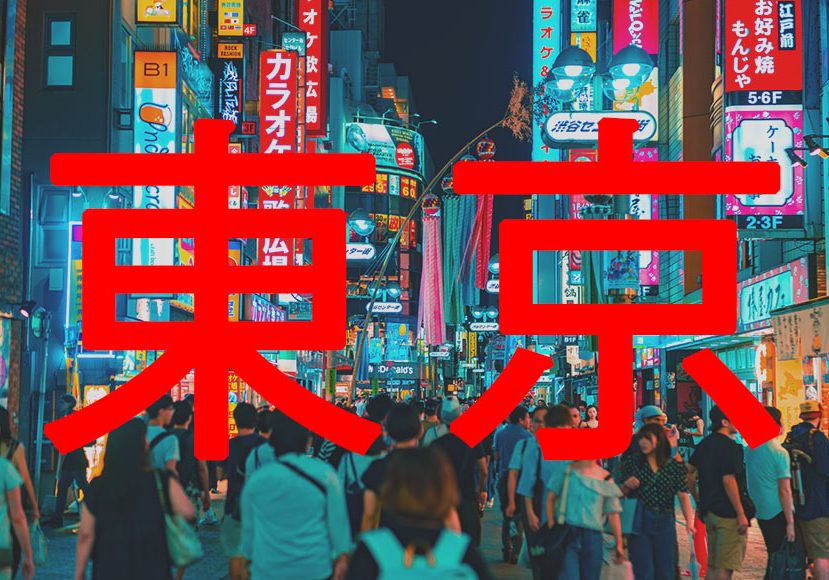
27 Best Places to Take Pictures in Tokyo
From the well-known Tokyo tourist photo spots to picture locations only a Japanese local would know, this is the guide for every traveling photographer.
Learn | Photo Locations | By Mark Condon
This guide to the best places to take pictures in Tokyo is based on my 7 years living in Japan.
Being immersed in Japanese culture and speaking the language fluently allowed me a unique perspective on Tokyo and its people.
Japan is a place where ancient culture and modernism meet, and this incredible city is a photographer’s dream.
I’ve included the well-known Tokyo photo spots every tourist needs to visit and also the ‘secret’ locations only a local would know.
This photo guide is useful to anyone who wants to take memorable and unique photos of their trip to the Land of the Rising Sun.
Hajimarimashou-ka? (Shall we get started?)
More local photo guides:
Table of Contents
The Well-Known (But Unmissable) Places to Take Pictures in Tokyo
1. Shibuya Scramble Crossing
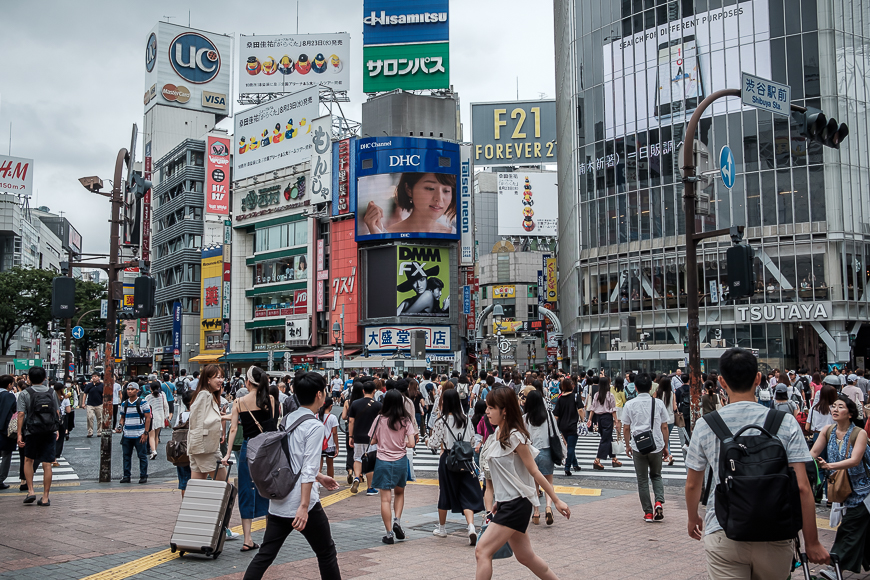
The Shibuya Crossing is a popular spot for street photography as one of the world’s busiest intersections.
It’s an excellent place to take a photo of the immense crowds that walk the streets of Tokyo every day. It’s also free, so you can watch the crowds and take as many photos as you want of the amazing views.
You’ll be fascinated by the number of people and how they all cross and walk in harmony without bumping into each other in one of the world’s busiest pedestrian crossing spots.
Best Time to Visit
Unlike other places that are best avoided when crowded, you can take better photos of the Shibuya Crossing from 6 pm to 9 pm, when everyone is going home.
You can take a photo in the morning too (see below tip), but the bright lights after dark will create the perfect backdrop for your shots.
Best View
For an iconic photo, I recommend you find a spot at the Starbucks Shibuya Tsutaya (a music/video rental shop), opposite Shibuya Station, where you can take a shot from the second floor of the iconic Shibuya Crossing.
You can also go up the Shibuya Sky the highest building in the district, and take a photo from the Sky Edge.
Pro Tips
I recommend you go there early in the morning to get a seat at Tsutaya near the window (there’s only very limited seating here).
This way, you can also get some photos of the iconic Japanese ‘salary-men’ as they scurry to work.
While you’re in Shibuya, you should also get a photo of the Hachiko Statue, a popular meeting point and a great place for people-watching.
2. Gyoen Park
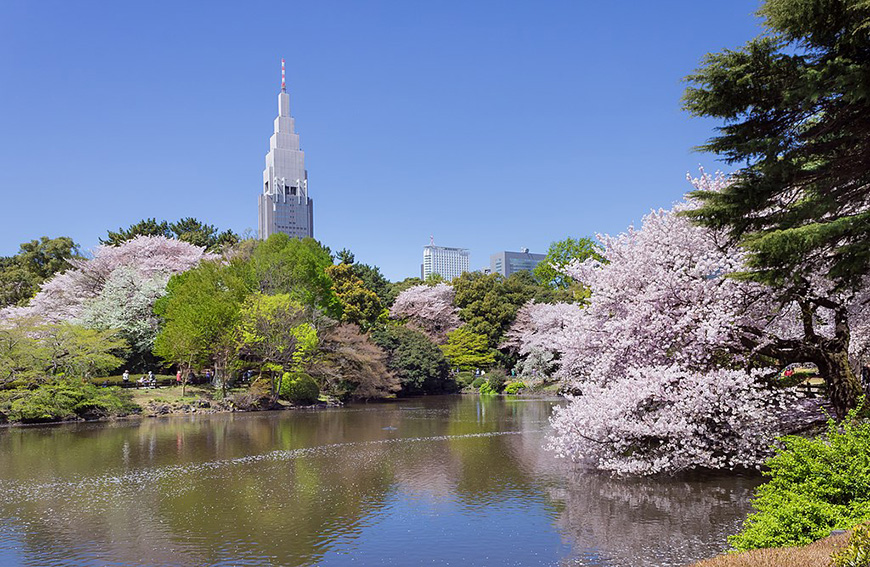
Credit: Kakidai, CC BY-SA 3.0, via Wikimedia Commons
Located in the Shinjuku area, the Gyoen Park stands with its amazing cherry blossom trees.
This park was once kept for the Imperial Family but has been open to the public since the 1940s.
The Shinjuku Gyoen National Garden is the number one destination for landscape photographers, especially in the spring when the cherry blossom trees are in bloom.
The photos symbolize the Sakura Season, or cherry blossom season, which symbolizes the beauty of life and death.
Be ready with an admission fee of 500 yen.
Best Time to Visit
Although it’s best to visit Gyoen Park in Spring to fully experience the cherry blossom in bloom, you can visit it at any time of the year to take photos of its unique trees and ponds.
Head to the park at dusk for an unbelievable sunset photo with the cityscape in the background.
Best View
Gyoen Park is home to three different gardens. The first one is the Japanese Garden with its pond, wooden bridges, and several pavilions like the Kyu Goryotei.
The second one is the English Garden, where trees are left to grow naturally, and you can see the blooming cherry blossom trees. Finally, you can head to the French Garden, built to imitate the royal gardens in Paris.
Walk around the park to find an interesting spot to take a photo, or head to the greenhouse, where you can find rare tropical flowers.
Pro Tips
If you manage to visit Tokyo in Spring, you should try and experience ‘Hanami‘, a fun ‘picnic’ of sorts that brings thousands of Japanese to eat and drink together under the cherry blossom trees.
However, you’ll need to snag a spot very early in the morning – bring a picnic rug and be prepared with enough provisions (and sunscreen) to wait until your friends arrive later in the day.
Photos in Tokyo wouldn’t be complete without some rosy-faced Japanese locals enjoying Hanami.
3. Tokyo Tower
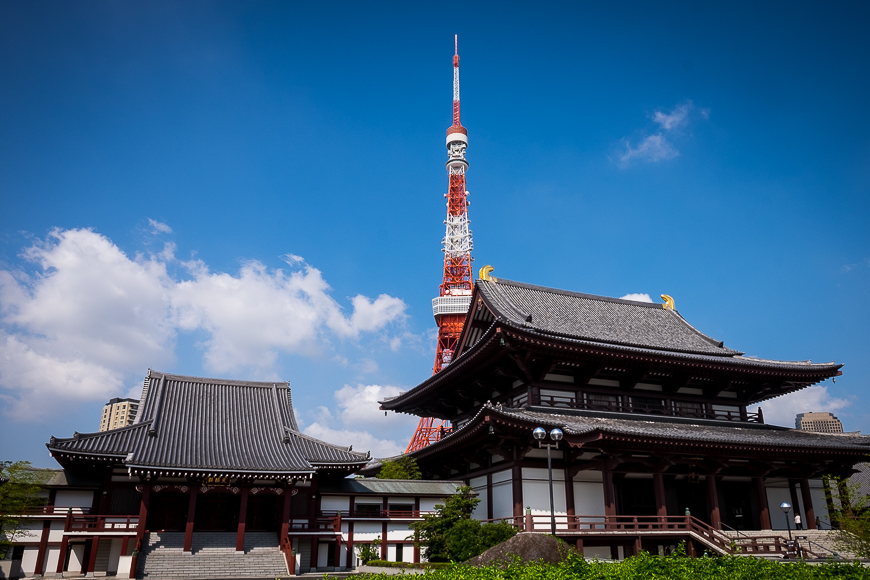
If you want to take a photo of a famous Tokyo landmark, nothing will beat a photo of the Tokyo Tower.
This communication and observation centre stands in the middle of Minato City and closely resembles the Eiffel Tower, but it’s white and red and actually 3 metres taller!
It’s the number one choice if you want to take a shot of an outstanding landmark with the city of Tokyo in the backdrop.
Best Time to Visit
The best time to take a photo of Tokyo Tower is at night when it’s brightly lit to create contrast with the dark night sky. The officials choose different colours to correspond to various occasions.
Best View
Go to the Mori Tower in Roppongi Hills or the Fuji TV building to take a clear shot of the Tokyo Tower, or find a spot on Sakuradadori Street to create a photo composition of the city with the tower in the centre of your picture.
4. Harajuku
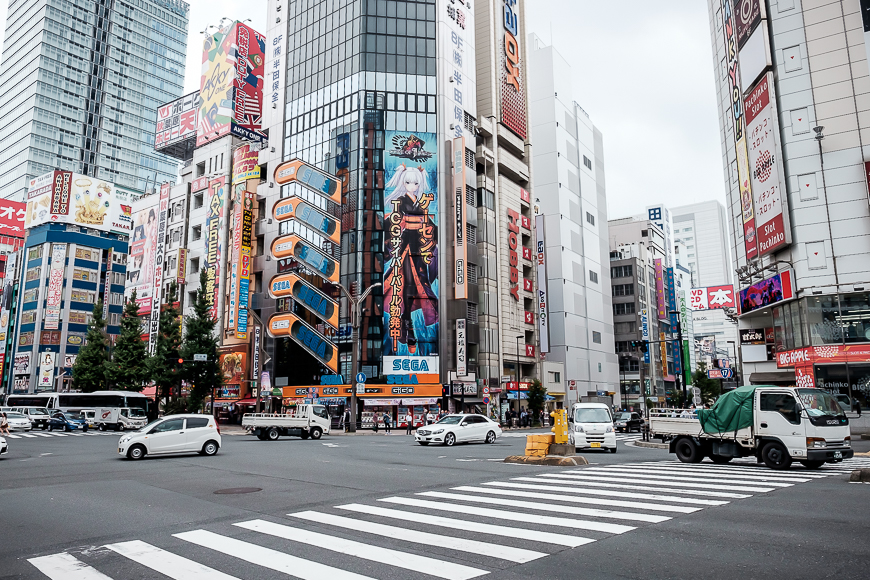
If you’re an anime lover or fan of cosplay, you’ve probably heard about the Harajuku area.
Harajuku is where you can take photos of weird Tokyo fashion trends, incredible styles, and unbelievable costumes.
You can also take shots of the unique shops and residential areas in the back streets, known locally as ‘Ura-Hara’ (behind Harajuku).
Most cosplay stores have glass fronts, so you can take your time to reframe an exciting photo composition.
You can also find food stores that sell animal-shaped ice cream and giant cotton candy, and you can take Instagram-worthy food shots.
Best Time to Visit
During the two main rush hours (7.30~9.30am and 5.30~7.30pm), you’ll find this popular Tokyo photo spot fascinating, if a little overwhelming!
Best View
Take a walk from the Harajuku Station to the entrance of Takeshita Street, one of the best spots to grab a lively photo of this area.
You can also head to the Tokyu Plaza Omotesando shopping centre, where the trees are incorporated into the building’s design to filter light and make the place more suitable for photography.
On the sixth floor, you can find Starbucks to enjoy a drink and take a photo from the viewing deck.
Tokyu Plaza itself is an excellent place to take futuristic photos of the world’s anime capital.
Pro Tips
Although the Japanese are mostly shy and reserved, don’t be afraid to approach them to ask for a photo.
Nowhere is this more true than in Harajuku, where the young dress to be noticed – even if they would never admit it!
You can approach Tokyo locals with your camera or smartphone in hand. Just smile and ask for a photo.
Most will understand if you ask in English, but if you want to speak the lingo, just ask ‘Shasshin ii desu ka?’ while pointing to your camera.
5. Asakusa
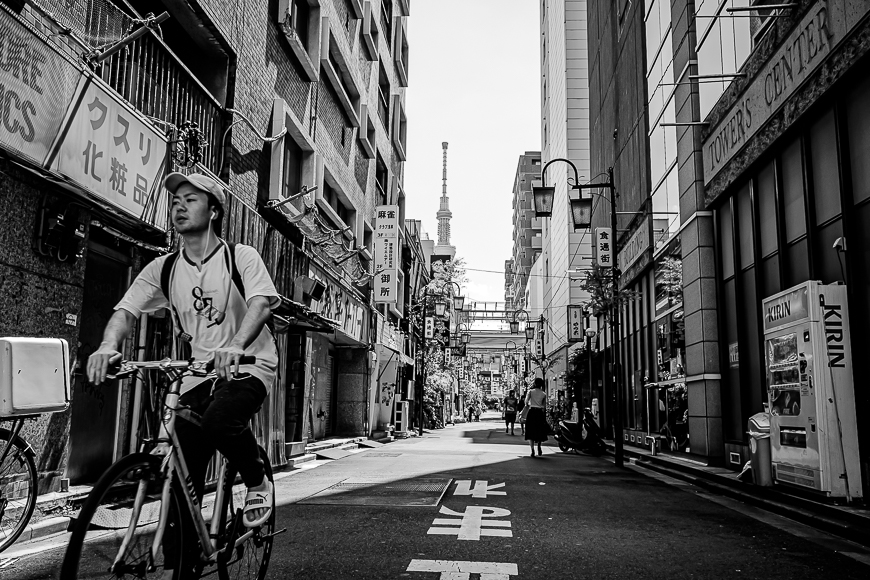
Visiting Asakusa Station while heading to the Senso-ji Temple feels like a trip back in time.
The neighbourhood still shows the remnants of ancient history with some street signs from the Edo period.
You can take shots of the traditional tea houses, covered streets, and small restaurants, which fill the spots between modern buildings.
Best Time to Visit
Like the nearby temple, the Asakusa area can get extremely crowded during the day. This is why it’s best to visit it early in the morning or after sunset.
However, if you want to take a photo of the crowds who walk down the streets and markets of Japan, you can visit it any time.
Best View
You can literally head anywhere for an amazing street shot. For an aerial view, head to the eighth floor of the Asakusa Cultural Center, and you can take a photo of the traditional area.
Pro Tips
Remember that if you want to take a picture of any popular Tokyo photo spot without all the tourists, one option is to set your camera up on a tripod, attach an ND filter, and shoot a long exposure.
By experimenting with the exposure duration, you can make any moving people ‘invisible’.
6. Senso-ji Temple
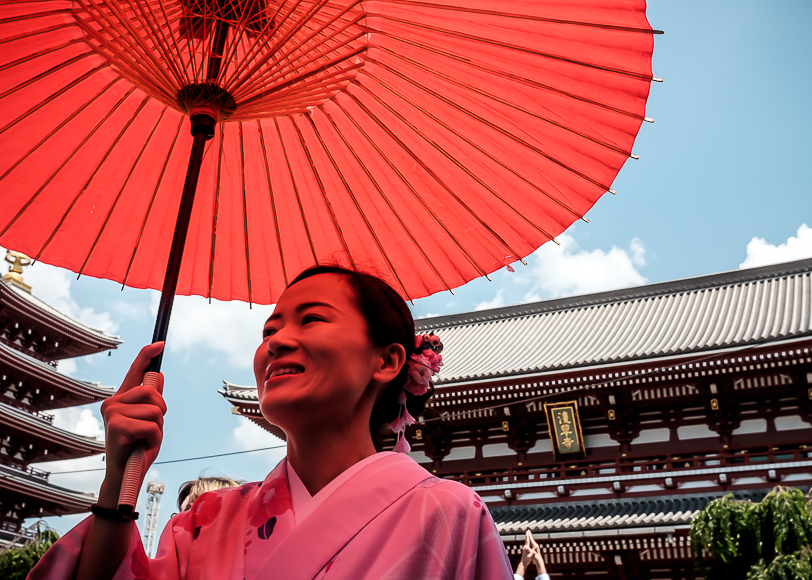
There are more than 4,000 temples and shrines in Tokyo, but the Senso-ji Temple is one of the most famous.
Senso-ji temple was built about 1300 years ago, making it the oldest Buddhist temple in Tokyo.
As well as the beauty of the main hall, you can take photos of the surrounding market with its traditional Japanese lanterns and rickshaws.
Best Time to Visit
The temple is open 24 hours a day, but you can only enter the main hall during the day.
If you want to take pictures of the hall and the massive crowds, heading to the temple in the early morning will be your best bet.
You can also take fantastic dusk and sunset photos of the Treasure House Gate or the Thunder Gate.
Best View
You can stand in the main hall’s balcony to take photos of the surrounding area or at the Thunder Gate to take pictures of the sunrise.
The five-level pagoda is one of the few standing in Tokyo today and will also be the central object of an iconic photo.
7. Omoide Yokocho
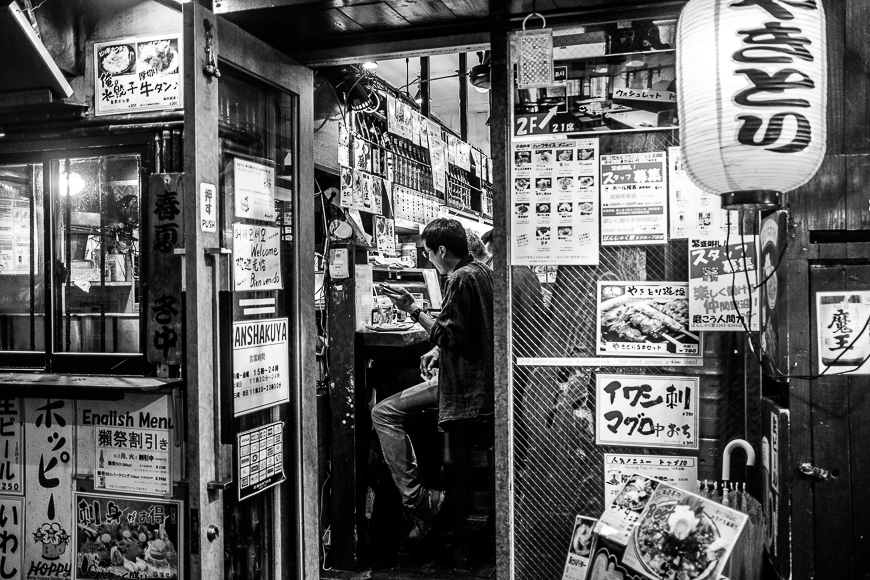 Once you reach Shinjuku Station, head to the Omoide Yokocho to explore one of the city’s smallest yet most remarkable alleys.
Once you reach Shinjuku Station, head to the Omoide Yokocho to explore one of the city’s smallest yet most remarkable alleys.
Also known as Memory Lane, this street offers a great insight into old Tokyo, with traditional shops and lantern-lined pathways.
You can take outstanding shots of the famous izakayas and bars with their paper lamps and wooden fronts. You can also take photos of traditional food, drinks, and people who enjoy both.
Best Time to Visit
The stalls are small, so you want to arrive in the early evening to be able to grab a bite and take time to think about your photo composition. Once it gets darker, the traditional Japanese paper lanterns will light up to fill your shot with magic.
Best View
Wherever you stand, you can take a shot that captures the essence of this spot. But be quick because the street can quickly fill with people, and some may not like to have their pictures taken.
However, if you’re polite and ask for their consent, they might not mind being part of your Tokyo photo composition!
8. Golden Gai

After visiting the Omoide Yokocho area, head to the nearby Golden Gai, a small district made up of six alleys where you can find unique Instagrammable spots.
The twisting tiny streets are home to Tokoy’s smallest drinking dens, known as Iza-kaya. Some spots are big enough to accommodate only two people at a time!
Golden Gai is an excellent reminder of the city’s history, as it’s located right in the middle of the modern skyscrapers. You can take a photo that captures the rich history with the futuristic neon lights in the background.
Best Time to Visit
After sunset, this area begins to come to life, and visiting it at night guarantees that you can create an exciting photo composition for the perfect shot.
Best View
You can grab a photo of the area while enjoying your drink or wait for some pedestrians to fill your shot with life. There are endless opportunities for an outstanding Tokyo city view in this area.
Pro Tips
Stick around for long enough in Golden Gai and you’ll see men in suits ushering passers-by (usually salary-men) into bars and other shadier establishments.
While I don’t recommend asking to get photos of these men, you may want to consider including them as part of your overall street photography composition since they’re unique and iconic to Japan.
It’s also fun to stick around after dark to see the inevitable drunken salary-men and revellers emerge from bars, stumbling around or sleeping in alley-ways!
9. Meiji Jingu Shrine
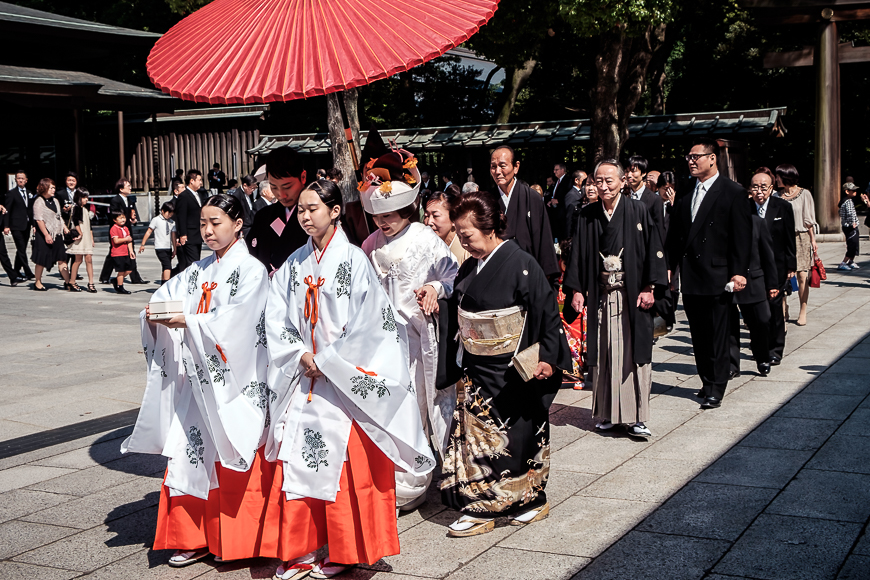
This is the number one visited Shinto shrine in Tokyo and an excellent spot for a photograph that captures the rich culture, architecture, and people of Tokyo.
You can also take a picture of the saké offerings to the gods.
The Meiji Shrine is the perfect spot for wedding ceremonies and other occasions in the Japanese capital.
You can often capture amazing portraits and panorama pictures that showcase traditional Japanese costumes and rituals.
Best Time to Visit
The Meiji Shrine opens at sunrise and closes at sunset, but you can visit in the morning to avoid the crowds if you want to take some good photos.
If you want to showcase the real spirit of the Japanese culture, you can visit a little bit late, when people gather for ceremonies and prayers.
The Inner Garden iris flowers are in full bloom in June, so you should plan your visit around that time.
Best View
There are plenty of places for taking photos of Meiji Shrine. Stand at the entrance to take a great picture of the forested avenue or head inside to take a shot of a wedding ceremony taking place.
Just remember to stay respectful if you’re photographing a Japanese wedding – a long zoom lens is recommended to allow you to keep some distance.
10. Tokyo Dome
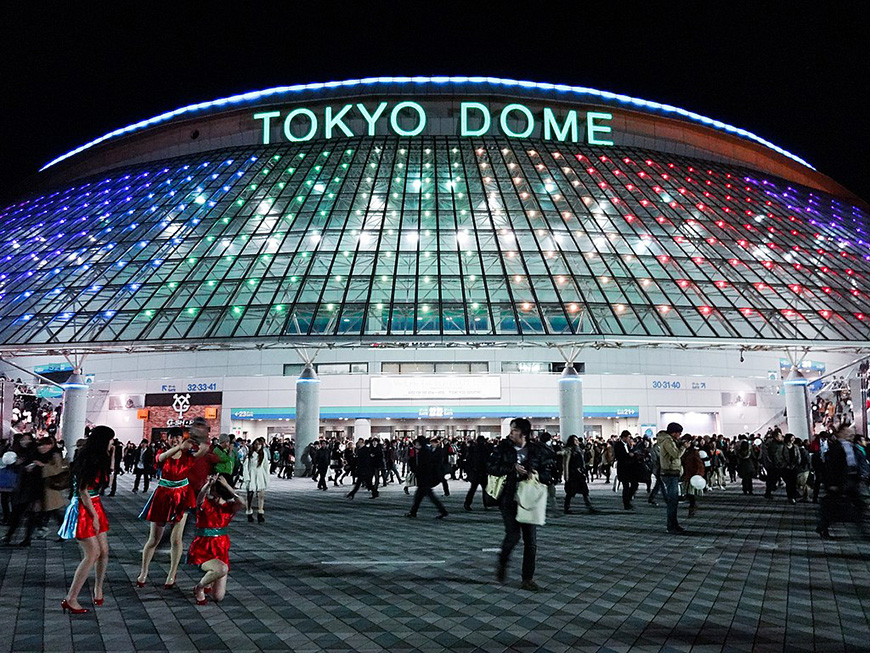
Credit: Dick Thomas Johnson, CC BY 2.0, via Wikimedia Commons
Statistics show that baseball is the most-watched sport in Japan, and if you visit the Tokyo Dome during one of the tournaments, you won’t be disappointed.
The iconic dome-shaped stadium hosts several sports events, including the famous Japanese baseball games.
Visiting during one of these events grants you a closer look at the enthusiastic Japanese crowds, marching bands, dancers, and colourful costumes.
In addition to the lively sports shots, you can also take photos of the surrounding Japanese gardens.
Best Time to Visit
Baseball games training starts in February and March, with professional play taking place from March to October. Just check the Tokyo Dome’s website for match dates.
Best View
Any seat aligned with the centre of the field will give you a good view of the stadium. Upper rows provide better panoramic photos.
11. Yoyogi Park
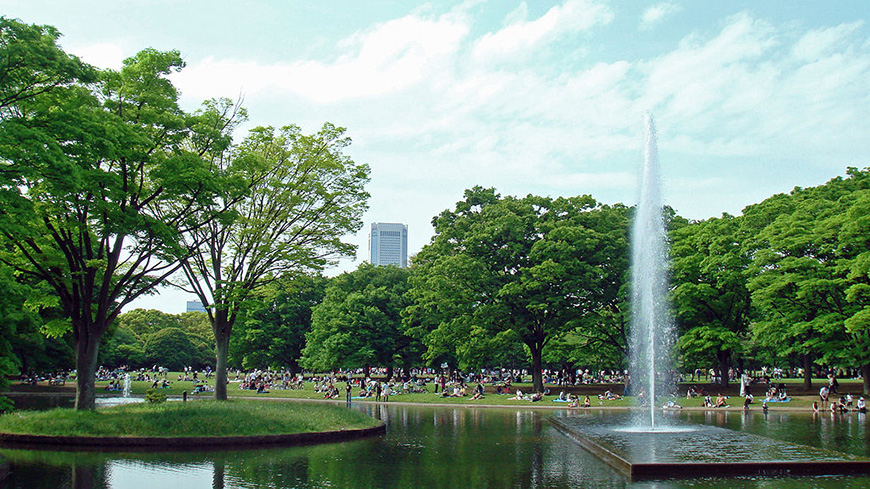
Credit: Shinjiro, CC BY 3.0, via Wikimedia Commons
If you’re interested in Tokyo landscape photos, then heading to Yoyogi Park should be on your list.
Yoyogi is one of the largest public city parks, and it’s located in the Harajuku District.
Go there on the weekend and you’ll find hundreds of people relaxing in its various forested areas or around the lake.
You can also see cosplay fans showing off their costumes and some rockabilly and hiphop dancers who come to perform and impress the crowds.
This is an excellent Tokyo photo spot despite its popularity with both locals and tourists.
Best Time to Visit
A visit in the springtime guarantees that you’ll be able to capture the beauty of the cherry blossom trees.
You can also visit Yoyogi Park in the autumn (fall) to enjoy the golden hues of the ginkgo tree forest.
Yoyogi is always open and free, and you can head to the park on a Sunday at noon and in the afternoon to take photos.
Best View
There are lots of Instagrammable spots to explore around the forest, so wear comfy shoes and make sure to cover as much as you can.
Pro Tips
Every Sunday afternoon near the bridge entrance to Yoyogi Park, rockabilly dancing groups put on a show for passersby.
You’ll also see the spill into the adjacent Harajuku area, so be sure to get your camera ready.
12. Odaiba Island
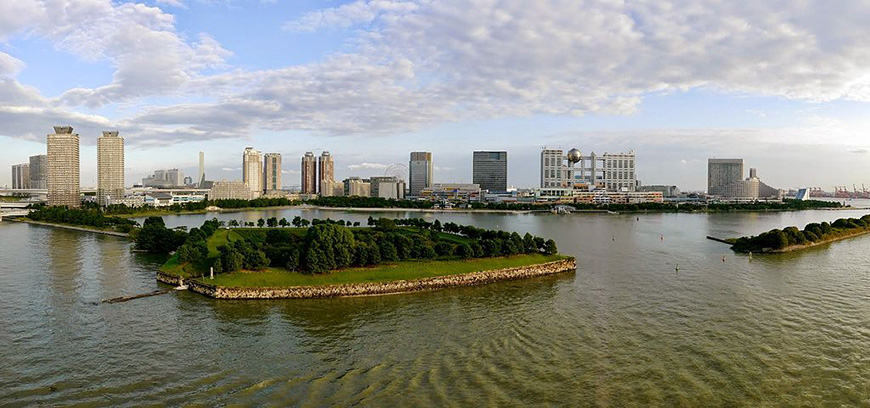
Credit: Ronny Siegel, CC BY 4.0, via Wikimedia Commons
Odaiba is a shopping district on an artificial island in Tokyo Bay. It’s the perfect spot for taking a shot of Tokyo’s skyline and the famous Rainbow Bridge.
You might also be on time for some fireworks displays, which take place every Saturday in December (except December 31st) for 5 minutes.
Best Time to Visit
Whether you head to Odaiba in the morning or evening, you can take wonderful shots of Tokyo’s skyline. It’s well-known as an excellent spot for sunset shots.
Best View
You can take photos of Odaiba from the ferry that takes you to the island or from the nearby Rainbow Bridge. You can also take photos of the Statue of Liberty and the nearby beach areas.
Pro Tips
If you hire a car in Japan, you can drive over Rainbow Bridge which connects Odaiba to central Tokyo.
While you won’t be able to stop on the bridge to take a photo, as long as you’re in the passenger seat, you can take a shot of a unique perspective of the city.
13. Rainbow Bridge
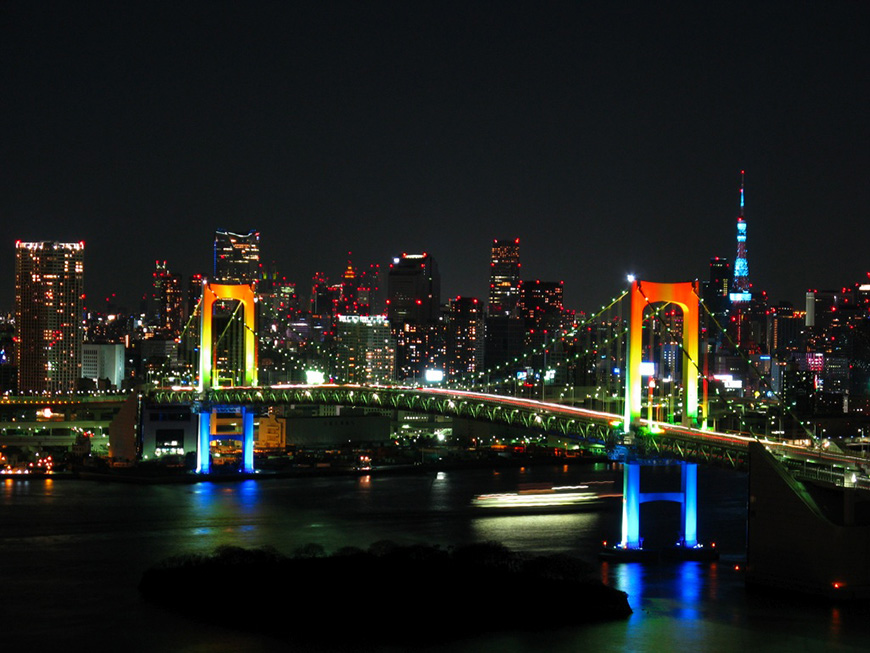
Credit: Gussisaurio, CC BY-SA 3.0, via Wikimedia Commons
Overlooking the famous Tokyo Bay, the Rainbow Bridge is an iconic representation of the playfulness of the city.
You can walk along the bridge to find an observation deck to take photos of the ferries, Tokyo Sky Tree, and Odaiba beachfront.
Best Time to Visit
Visiting the bridge at sunset or later in the evening is best to experience the lights at full power.
It might be a little crowded, but this way, you can get better nighttime views of the city’s skyline and tall buildings.
Best View
Although there are great views from both sides of the bridge, the north side offers better views. This is where you can take fantastic panorama shots, especially near the Harumi Passenger Ship Terminal, where you can find large passenger ships.
Pro Tips
While using a tripod on Rainbox Bridge is forbidden, you’re allowed to use a monopod, so make sure you pack one in order to get a steadier shot of Tokyo harbour after dark.
The Lesser-Known Tokyo Photo Spots (Local Secrets)

Almost everything on the streets of Tokyo is worthy of a photo | Clay Banks
Once you’ve ticked off all the most popular places to take pictures in Tokyo, it’s time to head to the places only the locals know about.
There are countless hidden streets and lesser-known Tokyo photo spots to uncover if you’re there for a few weeks, but here’s a selection of my favourites to help save you some time:
- Yanaka Ginza: A nostalgic shopping street that offers a glimpse of Tokyo from decades past. It’s a great place to capture the daily life of locals amidst Showa-era architecture.
- Gotokuji Temple: Often referred to as the “Cat Temple”, it’s home to countless maneki-neko (beckoning cat) statues. A unique spot that’s both serene and quirky.
- Todoroki Valley: A surprising natural ravine in the heart of Tokyo. The lush greenery and small stream offer a refreshing contrast to the urban landscape.
- Sumida Hokusai Museum: While the museum itself is dedicated to the famous ukiyo-e artist, its modern and sleek architecture is a photographer’s delight.
- Nezu Shrine: While many flock to the more famous Meiji Shrine, Nezu Shrine is a peaceful alternative with beautiful torii gates and traditional architecture.
- Daikanyama T-Site: A stylish complex with a bookstore, cafes, and modern architecture, it’s a favorite among the city’s trendy crowd.
- Kagurazaka: With its cobblestone streets and old-world charm, it’s reminiscent of Kyoto and offers a blend of the traditional and modern.
- The Rooftops of Ginza: Some buildings in Ginza have accessible rooftops that offer a unique vantage point of the bustling district below.
- Toyosu Fish Market: While Tsukiji was more famous, Toyosu is its modern successor. It’s less frequented by tourists and offers a glimpse into the seafood trade of the city.
- Kiyosumi Garden: Located in the Koto ward, this traditional Japanese garden is often overshadowed by the more famous ones but offers serene landscapes and beautiful koi ponds.
- Nakagin Capsule Tower: A unique piece of architecture from the Metabolism movement, this building in Shimbashi is made up of individual capsules. It’s a testament to a futuristic vision from the past.
- Sankaku Chitai: Located in Sangenjaya, this maze-like area is filled with tiny bars and eateries, reminiscent of Golden Gai but less frequented by tourists.
- Hakusan Shrine: Located in Bunkyo ward, it’s famous among locals for its hydrangea festival in June but remains relatively unknown to tourists.
- Tomioka Hachiman Shrine: In the Fukagawa area, this shrine is home to Tokyo’s largest mikoshi (drinking-water shrine) festival but is quiet and peaceful for most of the year.
FAQs about Taking Photos in Tokyo
Is it legal to fly a drone in Tokyo?
Drone operations are prohibited over large cities and crowded public areas, including Tokyo, Yokohama, Osaka, Nagoya and Sapporo in the Kanto region; Fukuoka and Kumamoto in Kyushu; and Sendai in northern Japan.
If you’re not in these areas, tourists may be permitted to fly drones in Japan, but it’s necessary to apply to the Ministry of Land, Infrastructure, Transport, and Tourism at least ten days in advance and follow all MLIT regulations and Japanese drone laws.
Is it legal to take street photos in Tokyo without permission?
While it’s generally legal to take street photos in Tokyo, it’s essential to respect people’s privacy. If someone objects to having their photo taken, it’s best to delete the image or avoid taking it in the first place.
Are there any places in Tokyo where photography is strictly prohibited?
Yes, certain areas, especially private properties, temples, and shrines, might have signs prohibiting photography. Always look for signs or ask staff if you’re unsure.
Do I need a permit to shoot with a tripod in public places in Tokyo?
In many busy areas, especially popular tourist spots, using a tripod can be restricted due to the obstruction it might cause. It’s always a good idea to check local regulations or ask local authorities. Usually, a monopod is permitted.
How do Japanese locals generally react to being photographed?
While many Tokyo residents are used to tourists and photographers, it’s always polite to ask for permission if you’re taking a close-up or portrait. A smile and a courteous gesture towards your camera or smartphone camera can go a long way.
How can I respect local customs and traditions while photographing?
Always be aware of your surroundings, especially in religious or sacred places. If in doubt, observe what locals are doing or ask someone. It’s also a good practice to dress modestly and avoid loud or disruptive behaviour.
Is flash photography allowed in museums and indoor attractions?
Most museums and indoor attractions in Tokyo prohibit flash photography to preserve the exhibits. Always check for signs or ask staff before using flash.
Can I photograph the Tsukiji Fish Market?
While the inner market of Tsukiji has moved to Toyosu and has specific photography rules, the outer market remains and is generally more lenient about photography. However, always be respectful of the workers and avoid obstructing their activities.
Best Photo Spots Tokyo | Final Words
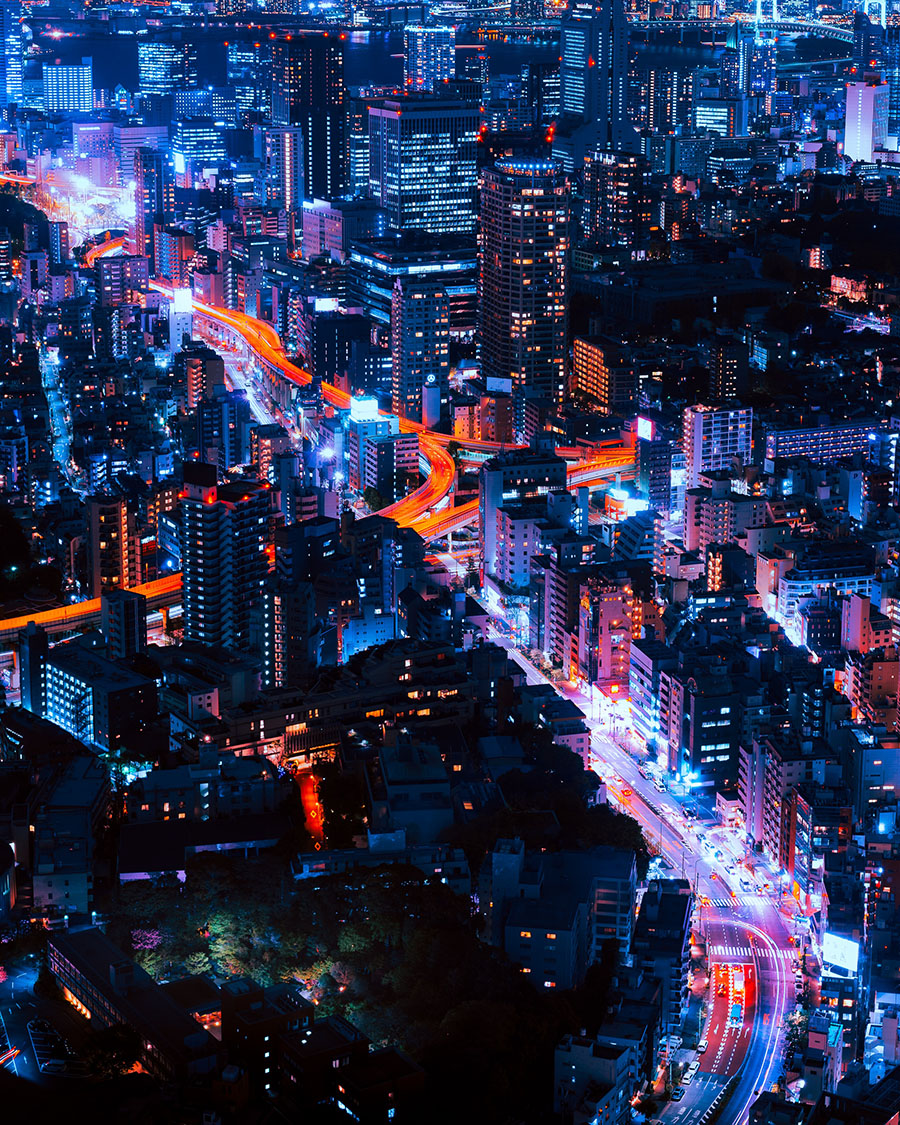
Tokyo from the skies | Pawel Nolbert
Anime, technology, skyscrapers, and neon lights might cross people’s minds when someone mentions Japan’s capital city.
However, an avid photographer will always wonder about the best photo spot in Tokyo.
Tokyo is the most populous city in Japan and one of its most famous tourist destinations.
While the city is known for its outstanding historical and cultural spots, some places seem to come from a sci-fi movie.
During your visit to Tokyo, you can take fantastic street photos, shoot photos of ancient Japanese architecture, highlight the beauty of Japanese cuisine, and show people’s respect for the deities.
Everything represents an outstanding photography opportunity, from the city skyline to the city lights, tall buildings, parks, gardens, beaches, ponds, old markets, and narrow streets.
Some of the best Tokyo photo spots can be found on the main streets, while others can be hidden in alleys.
Luckily, there’s no law against taking photos in Japan, but you’re always advised to get permission before taking a picture.
I hope you enjoyed this guide – leave a comment below if you think I’ve missed anywhere in Tokyo that’s great for photos.
All photos unless otherwise indicated were taken by Shotkit writer and photographer Greg Cromie during his travels in Japan.





